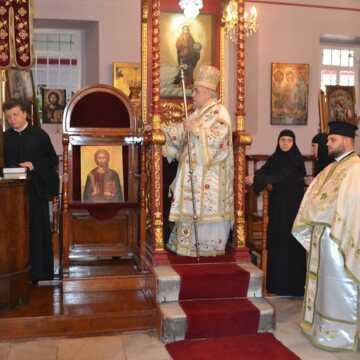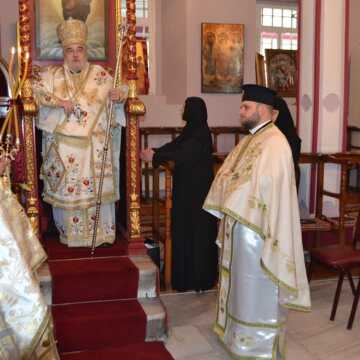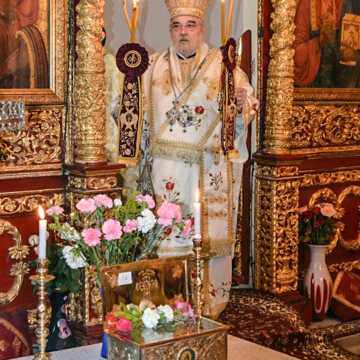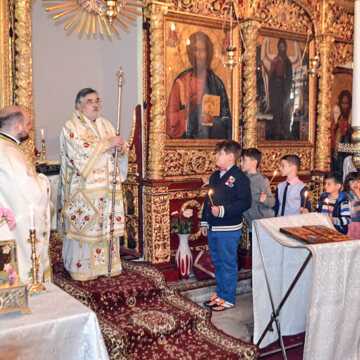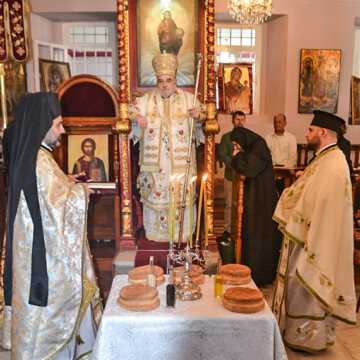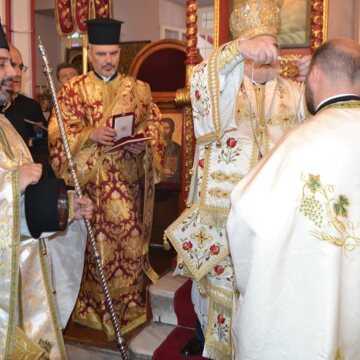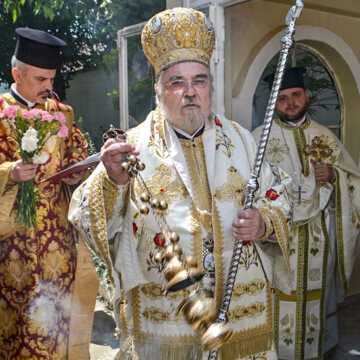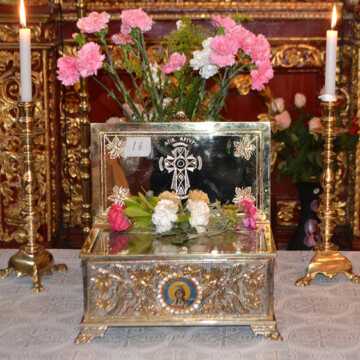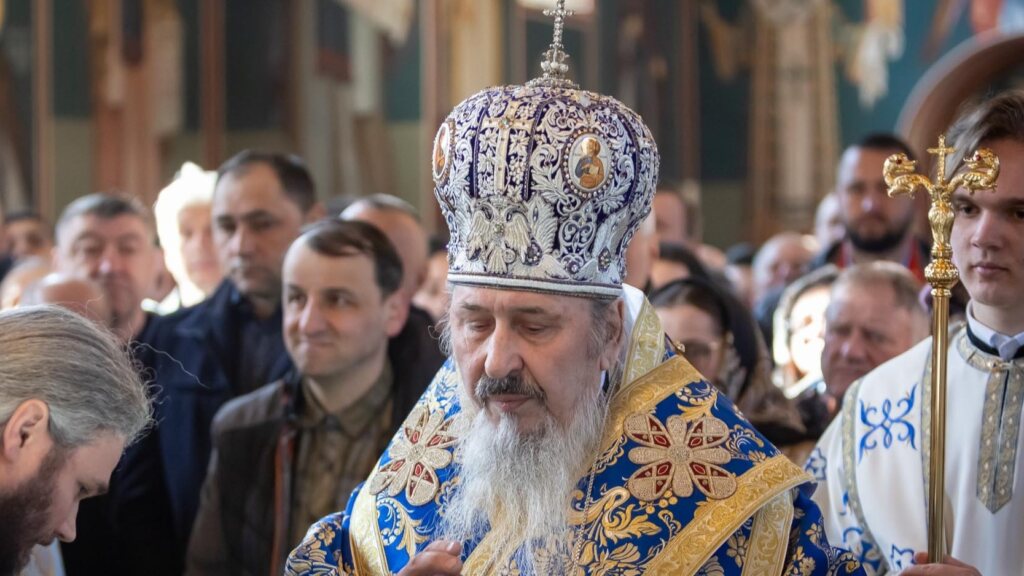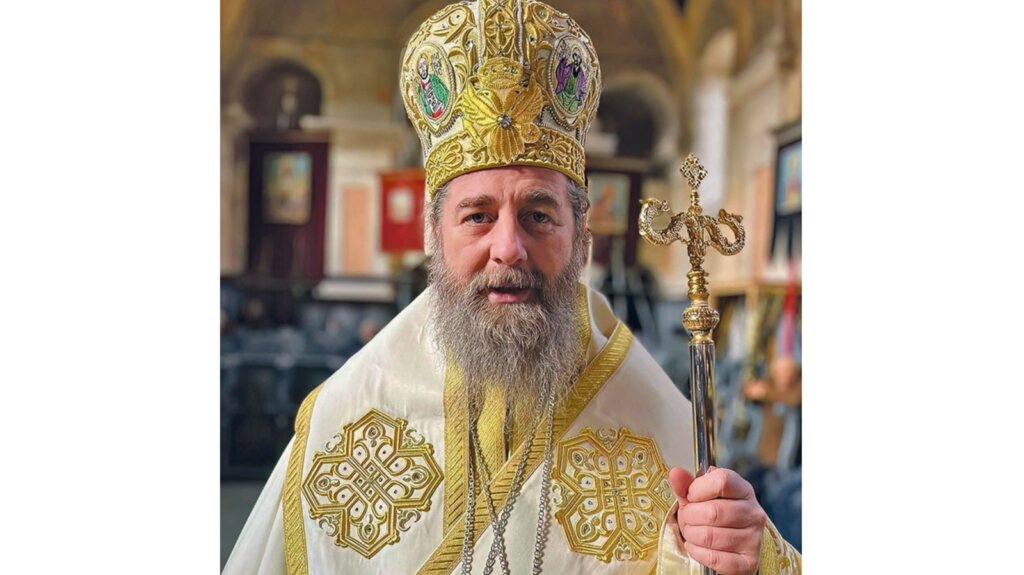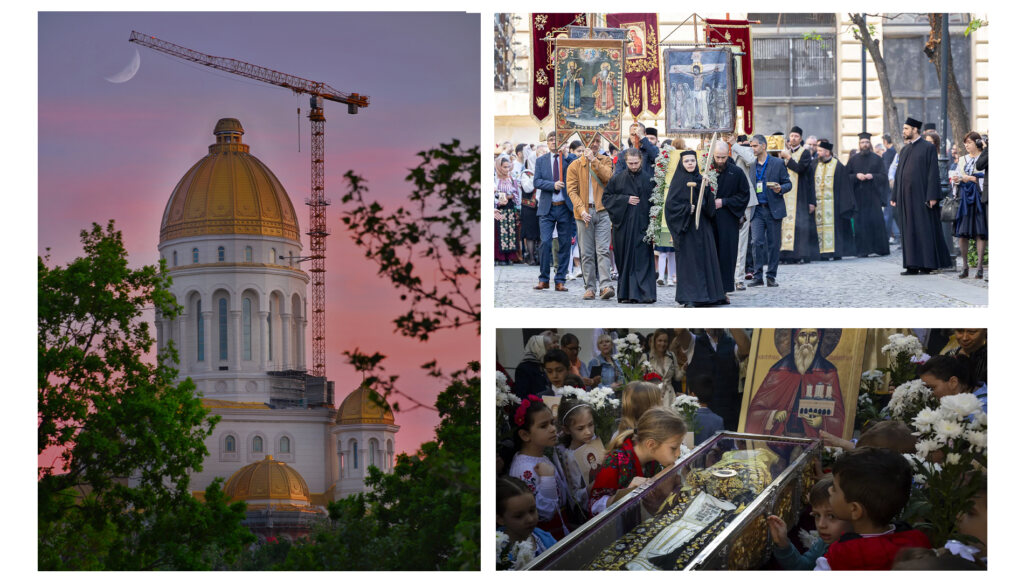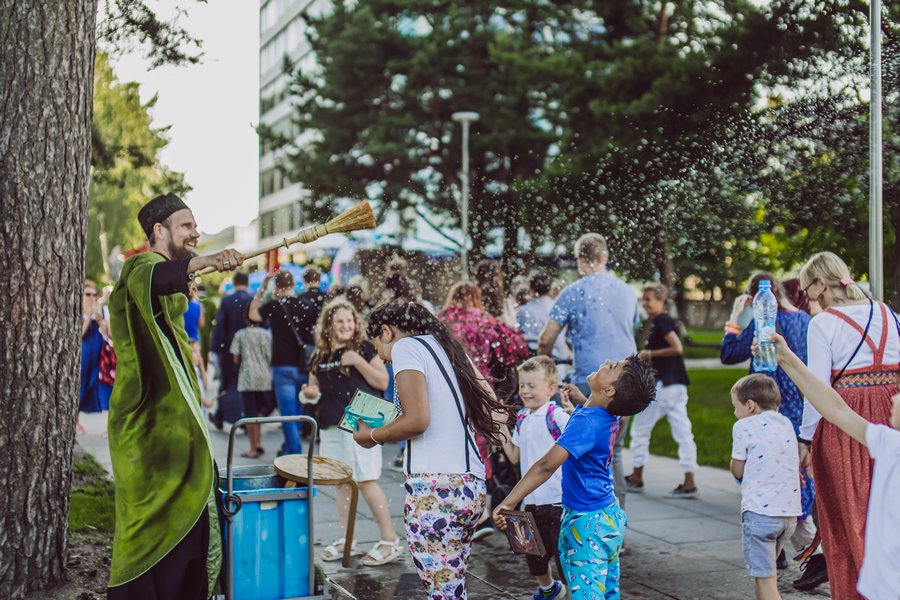On 8 May 2016, Sunday of Saint Thomas the Apostle, the church of “Saint Martyr Paraskevi” located in Haskoy district of Istanbul celebrated its second spiritual protector, Saint Neo-Martyr Argyra. A particle of the relics of Saint Argyra is kept in the church of the community of Orthodox Christians from Istanbul.
Because the celebration day of Saint Martyr Argyra was on the Holy Great Saturday this year, the Saint was celebrated on the Sunday of Saint Thomas the Apostle.
According to the established tradition, the Divine Liturgy was celebrated in the Greek and Romanian languages by His Eminence Gennadios of Sassima together with a group of Greek priests also including Rev. Fr. Sergiu Marcel Vlad, the Romanian parish priest.
Faithful from both Christian Orthodox communities, Romanian and Greek, attended the celebration in the church. His Excellency, Mr Anton Niculae, representative of the General Consulate of Romania in Istanbul attended the Divine Liturgy.
At the end of the Divine Liturgy, with the blessing of His Holiness of Bartholomew, Ecumenical Patriarch, His Eminence Metropolitan Gennadios de Sassima awarded the Patriarchal Cross to the Romanian priest Sergiu-Marcel Vlad, as a sign of recognition of his missionary activity in Turkey in the service of the Romanian community, as well as for his worthiness, faith and devotion to the Church.
After the Divine Liturgy, all those present could enjoy an agape with Romanian traditional products typical for the feast, held in the refectory of the Romanian Orthodox Community.
Life of Saint Neo-Martyr Argyra
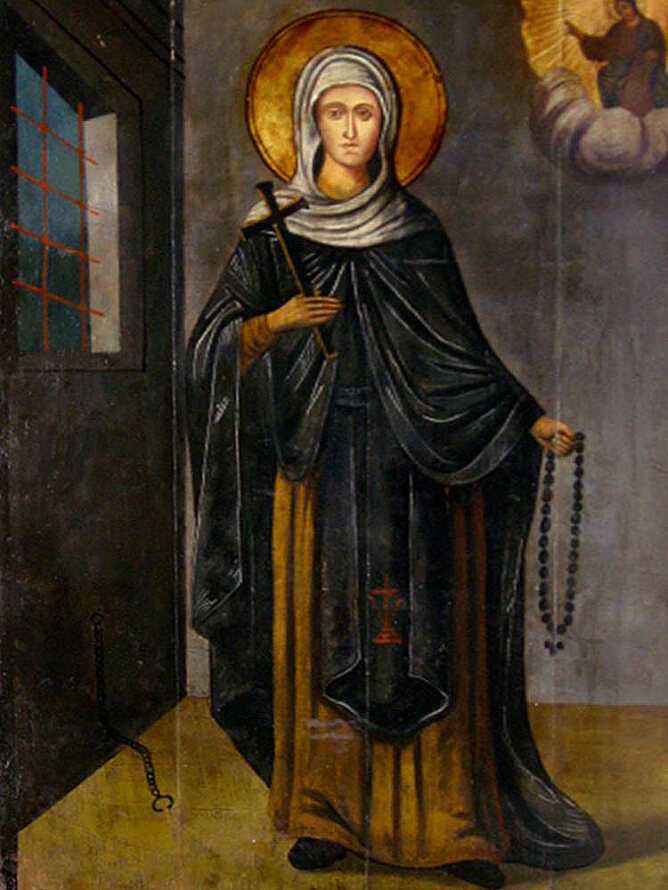 Saint Argyra was a native of Proussa Bithynia (Bursa city of Turkey). The saint’s parents, George and Susana were Byzantine Orthodox, very virtuous and lovers of God. Born and educated in the Orthodox faith, Saint Argyra has learned the love of God and devotion to her nation ever since she was a child. At that time there still were Greek Orthodox living in Asia Minor and while fighting to survive, the small community of Byzantine origin, the descendants of the Byzantines, were very attentive to the formation of every family, as Lumina newspaper informs.
Saint Argyra was a native of Proussa Bithynia (Bursa city of Turkey). The saint’s parents, George and Susana were Byzantine Orthodox, very virtuous and lovers of God. Born and educated in the Orthodox faith, Saint Argyra has learned the love of God and devotion to her nation ever since she was a child. At that time there still were Greek Orthodox living in Asia Minor and while fighting to survive, the small community of Byzantine origin, the descendants of the Byzantines, were very attentive to the formation of every family, as Lumina newspaper informs.
Argyra married a young Greek man, but after marrying him she was pressed a lot by a pasha, the governor of Bursa city at the time. He wanted to force her to abandon her husband and faith so that he could take her in his harem. Following her parents advice, Argyra and her husband left from her native city to Constantinople, to her families’ relatives and friends. We learn from the Greeks’ information that the persecutor who was following her did not give up and persecuting the relatives of young Argyra, he learned about her departure, and sent soldiers to bring her by force to his harem. The districts inhabited by Orthodox Greeks of Constantinople were thoroughly searched until the persecutors found Saint Argyra. Because she did not want to give up her faith in Jesus Christ, our Saviour, and the Greeks defended her, the persecutors used the law and unjustly accused her of revolt and insult to the Ottoman religion and so they sentenced her to life imprisonment. Her parents have tried in vain to have a just judgement for releasing their daughter, but they did not succeed. While she was in prison, Argyra was said to have been threatened and told she could not be free unless she gave up her Christian faith and accepted to be wife of Bursa’s pasha. That was why she sent a message to her parents telling them that it was not useful for her to be free if she was forced to become a pagan and so, she preferred to stay in prison and belong to Jesus Christ.
The Brâncoveanu Saints Martyrs suffered for their faith during the same period. In 1714, Saint Argyra had already been for a few years in the terrible women’s prison of Pikrydion – Haskoy.
The persecution and sufferance in prison were very hard for Saint Argyra who could sew and weave the torn clothing of the other women imprisoned when she was allowed to. According to the guardians’ confessions, Saint Argyra was in continual prayer to Jesus Christ, our Saviour, and to the Holy Theotokos. It is said that the sewing thread she once was given was always long when she woke up in the morning although she was using it, and so she could sew using the thread God gave her for the other persons. The prison was located about 400 metres far from the church of Saint Paraskevi-Pikrydion in Haskoy. When the church bell was ringing, Saint Argyra was saying prayers and did want to receive Holy Communion. God fulfilled her desire and proving her that He received her offering of faith the Saviour appeared to her before she died exhausted by sufferance and gave Himself as Communion through the juice of a grape.
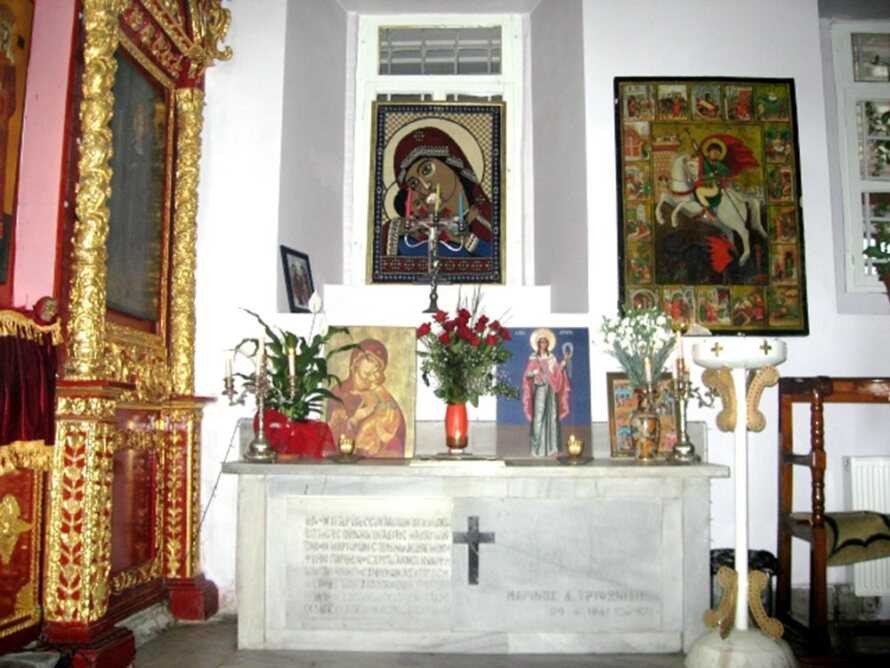
Saint Argyra passed away on 5 April 1725, because of the terrible physical sufferance she endured for 16 years in the prison of Haskoy and was buried in noble vault in the precincts of the cemetery of Saint Paraskevi church of Haskoy, old Byzantine basilica re-founded by the Saint Prince and Martyr Constantin Brâncoveanu in 1692. In 2004, this holy place of worship became the church of the Romanian Orthodox parish of the “Holy Trinity” in Istanbul. At that time, the cemetery of the Holy Church of Paraschevi-Pikrydion was patriarchal and noble cemetery for the descendants of the former Byzantine leaders, and the saint was buried there because it was close to the prison. When she passed away, the saints’ parents were still living, but they had not seen her since she was 18, when the saint left for Constantinople to save her faith. In 1728, three years after she was buried, during the time of patriarch Paisios II, her parents came to the church of Haskoy and asked the Patriarchate to agree to unbury their daughter. (According to other inhabitants of Constantinople, it is said that her parents did no longer know anything about Argyra, neither about the prison she was in, but they came year by year to look for their daughter. Thus, in 1728, in spring, they found her in the church of Haskoy, surrounded by the faithful who were praying to her relics. It was then that the Greeks of Haskoy have also understood who the saint buried in their church was).
The inhabitants of this area said that certain signs appeared at the saint’s grave that have drawn their attention, so that the patriarch, wishing to explain those signs, agreed to unbury her, although only three years had passed since her burial. Candles were burning for quite a long time at her grave, even days on end, in which conditions they would have melted anywhere else. The spring flowers which, in normal conditions, would have been withered away in one month at last remained in bloom until late, in the autumn, in spite of the summer hot weather. The birds were singing and sitting on the saint’s grave every day, without soiling it, where a light often came down and guarded it.
The saint’s body was unburied on 30 April 1728 when it was found not rotten and spreading a good smell. Patriarch of Constantinople, Paisios III (1726–1732) went from Phanar to Haskoy to make sure that these deeds and proofs of devotion of the faithful were true, and established, through a canonisation Tomos, the celebration of the Saint on 30 April.

